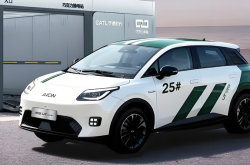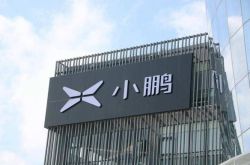Geekr's Story of Crafting Cars for Waymo: An Unprecedented $7 Billion Investment
![]() 01/23 2025
01/23 2025
![]() 579
579
Author | Miaoling
Editor | Dexin
Last July, Waymo shipped a fleet of Geekr electric minivans (now officially named Zeekr RT) to the United States for its autonomous taxi service.
As a global pioneer in autonomous driving technology, Waymo has modified vehicles such as the Lincoln MKZ, Chrysler Pacifica, and Jaguar I-PACE. However, these Geekr electric minivans are a unique breed; they roll off the assembly line fully mass-produced without steering wheels or pedals.
Equipped with Waymo's sixth-generation sensor suite, these electric minivans offer 360-degree LiDAR coverage, a comprehensive visual system, and ultrasonic radars.
The global autonomous driving industry is currently abuzz with excitement.
In October 2024, Tesla, the industry disruptor, officially launched its CyberCab for driverless taxi services.
Subsequently, Tesla CEO Elon Musk announced during the third-quarter earnings call that the CyberCab would enter mass production in 2026, with an anticipated annual production capacity of 2 million units, eventually scaling up to 4 million.
In the same month, Waymo announced the completion of a $5.6 billion Series C funding round, led by parent company Alphabet, setting a new record for the largest funding in the Robotaxi sector. With Series A and Series B funding of $3.2 billion and $2.5 billion respectively, Waymo's total funding has reached an impressive $11.1 billion.
Unlike Tesla, which manufactures vehicles end-to-end, Waymo focuses solely on autonomous driving technology, sourcing vehicles from external automakers.
This is not the first time Geely has provided vehicles to Robotaxi operators.
As early as the 2021 Shanghai Auto Show, Volvo Cars signed a strategic cooperation agreement with Didi Chuxing to supply vehicles for Didi's autonomous driving services and jointly develop Robotaxi technology.
The convergence of Waymo and Geekr, as well as Didi and Volvo, within the Geely ecosystem is not a mere coincidence.
I. Unleashing the Blade
In 2017, Yang Dacheng was assigned to the European R&D center, where he led hardware, electrical and electronic architecture, and software teams, working on the international version of the Lynk & Co 01 and the Robotaxi project with Waymo.
According to Yang's recollection, Waymo approached Geely in early 2019, when the concept of the HAO-M architecture had taken shape, and some engineering possibilities had been verified.
The HAO architecture is part of Geely's early strategy for electric vehicles.
In addition to Geekr, the HAO architecture is open to the entire Geely ecosystem, including Volvo.
The HAO-M architecture is a further evolution of the HAO architecture, developed by Geely in anticipation of the rapid advancements in L4 autonomous driving.
The HAO-M (SEA-M) architecture was designed and developed by Geely's European Center for Automotive Research and Technology (CEVT).
During discussions between Waymo and Geely, it became evident that the differentiated experience offered by the M architecture aligned perfectly with Waymo's requirements. From a cost perspective, Geely's years of development in architecture and safety had resulted in a higher cost-effectiveness.
Waymo's involvement allowed Geely to build upon the Robotaxi leader's expertise, further exploring future-oriented architecture design.
In 2021, Waymo invited bids from global automakers to custom-build vehicles for Robotaxi scenarios. Geely emerged victorious, and the two sides officially collaborated to develop a new generation of Robotaxi.
Based on the HAO-M architecture, while developing the Robotaxi for Waymo, Geekr also planned the Geekr MIX, a family-oriented vehicle on the same platform. Geely invested 7 billion yuan in developing the HAO-M architecture.
Waymo had two primary requirements for the product: ample interior space and the ability for passengers carrying shopping bags to easily step into the vehicle.
To maximize space, the European R&D center designed a capsule-like shape, shortening the front overhang and pushing the dashboard forward.
To facilitate passengers carrying shopping bags while entering the vehicle, two conditions had to be met: a low ground clearance and large doors.
The opening width of ordinary MPVs is approximately 760mm, requiring passengers to sit down first and then place their shopping bags. To enable passengers to "step into" the vehicle, opposite-opening doors and the removal of the B-pillar were necessary.
Yang Dacheng later recalled in an interview with Yuanchuan Automobile Review that the Robotaxi, with its daily influx of passengers, attracted Waymo with its design of no B-pillar, a flat floor, and ample space.
Three years later, the blade was unleashed.
In May 2024, Geekr was listed on Nasdaq, and An Conghui stated in his listing speech that the custom-built model in collaboration with Waymo would soon enter the U.S. mobility market.
On October 23, Geekr announced at the MIX model launch event that the driverless mobility robot developed in partnership with Waymo had commenced road tests abroad and was expected to become the world's first mass-produced and delivered native driverless vehicle.
At CES in early 2025, Geekr and Waymo jointly showcased the mass-production version of the Zeekr RT.
Meanwhile, Waymo made significant strides in commercialization in San Francisco, with order volumes surpassing those of Lyft and ranking second only to Uber.
In 2021, Yang Dacheng returned to China and, after discussions with An Conghui and the team, began working on a family car based on the HAO-M architecture.
In March of the same year, Geekr was established, with An Conghui serving as CEO, and Geely assigned CEVT to Geekr.
When deciding to build a car for Geekr based on the HAO-M architecture, Yang Dacheng and his team initially had even bolder ideas than the MIX.
At the product definition stage, the team once considered naming the car Magic Interior, envisioning a highly distinctive interior with numerous ports for users to personalize their vehicle according to their preferences. However, considering engineering difficulties and costs, they scaled back these whimsical ideas.
During the product definition phase, An Conghui expressed differing opinions on space, doors, and seats.
An Conghui proposed the idea of rotating seats, believing it would significantly enhance the user experience and make the car more akin to a futuristic home, where family members can not only sit side by side on the sofa but also chat face-to-face at the dining table.
According to Yang Dacheng, to enable seat rotation, the team had to address issues related to strength and NVH (noise, vibration, and harshness). The development of rotating seats underwent five rounds of bench testing. Engineers from the mechanical and software teams often had disagreements but eventually achieved the goal.
The rotating seats, totaling two, can rotate 270 degrees, allowing passengers to face each other or even enjoy a hot pot meal in the car with the air conditioning on.
To maximize space utilization, An Conghui suggested pushing the seats into the trunk.
Ultimately, the team devised a solution: pushing the wheels outward to their maximum extent and designing a special shock absorber structure to keep them close to the wheels without interference while maintaining vertical alignment to ensure comfort. Additionally, they minimized the space occupied by controllers and wiring harnesses to ensure that the seats could be pushed behind the wheel arches, creating a living room-like space.
During the review process, An Conghui questioned the button-operated doors, believing that door handles would provide a more reassuring experience for family cars. The team eventually opted for a design with door handles.
The final product is replete with innovations.
The Geekr MIX features a capsule-like shape with a wheelbase exceeding 3 meters, similar in size to the Geekr 001 but 282mm shorter in length.
Like Waymo's Robotaxi, the MIX also adopts opposite-opening doors. Previously, the most notable use of opposite-opening doors was in Rolls-Royce vehicles, which employ a pivot structure with the rear doors opening rearward.
Yang Dacheng claims that Geekr's engineering solution provides the MIX with twice the space of a Rolls-Royce.
Unlike Waymo's Robotaxi, the MIX has been designed to be the fastest parking car in the world, achieving a parking position in just 34 seconds, thanks to its increased front wheel steering angle, resulting in a turning diameter of 9.9 meters.
While prioritizing innovative design, the team also ensures reliability and safety.
In an interview, Yang Dacheng explained that traditional collisions transmit force through three paths: one from the chassis, one from the doors, and one from the A-pillar.
Since the MIX lacks a traditional B-pillar, the middle path is absent, requiring the team to find ways to divert more force through the underbody and roof. Therefore, the team redesigned the A-pillar and sill beam.
For the chassis path, the MIX features an internally named "average energy absorption engine compartment structure," where each component in the engine compartment absorbs energy, ensuring that collision forces are stopped before reaching the driver's feet.
The left front door is a traditional electrically operated door with two locks, and the rear door has three locks. Since the B-pillar is integrated into the door, it must ensure that the door can be securely held by the body and withstand impact energy during a collision without being pulled askew.
For the roof, the MIX uses a new type of steel with a strength of 2000 MPa, a seamless steel tube formed through hot air expansion, providing exceptional strength.
This vehicle poses significant engineering challenges, as it lacks a traditional B-pillar and crossbeams, yet it must ensure collision and roof crush safety.
"The timely delivery of the MIX is the most challenging engineering and development project in Geely's nearly three decades of vehicle manufacturing," An Conghui said in an interview. The development investment in the Geekr MIX is 2.8 times that of a mid-to-large SUV.
Yang Dacheng believes that the growth rate of electric vehicles priced above 200,000 yuan is slowing down, with electric cars becoming either high-end toys or low-end transportation tools.
"I'm not too concerned about price wars because you can't buy a second car like this one," he said.





